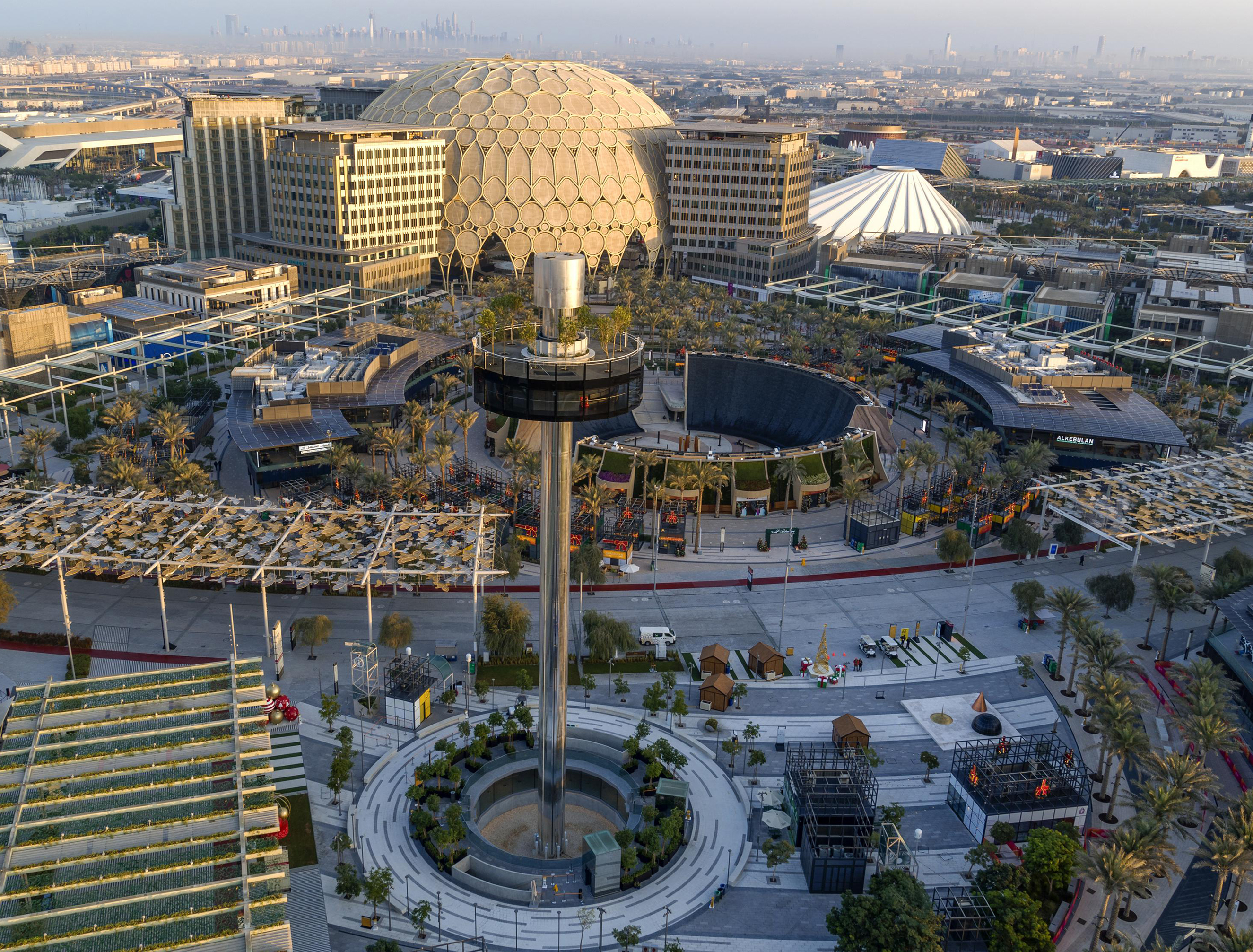
Close

Approach Words: Creative City, Smart City, Sustainability
Public Policy Instruments: Communicative, Organization, Physical Intervention, Planning, Regulatory
Dubai Expo 2020 was a World Expo hosted by Dubai, United Arab Emiratesi 1. The first to be held in the Middle East, Africa, and South Asia region, the Expo drew 24.1 million visitors in its 6 months from September 2021 to March 2022 ii 2. The guiding theme for the Expo was “Connecting Minds, Creating the Future”, with three subthemes that tackle key global issues and challenges facing the world today: “Mobility, Opportunity and Sustainability” 3.
The Expo site was located within a 4.38 square kilometer area strategically located between Dubai and Abu Dhabi, in the Dubai South economic zone4. Drawing inspiration from the traditional layout of the Arab souk, the Expo’s masterplan featured three large pavilions representing the three sub-themes, and smaller exhibition spaces are clustered in the center5. The inclusive heart of the project was a central plaza known as ‘Al Wasl Plaza’, which draws its name from the historic name for Dubai meaning “the connection” 6. In this sense, the masterplan’s concept was to “[look] to the future while celebrating traditional Emirati culture and community”7 .

Title: Masterplan of Dubai Expo 2020.
Source: Click Here

Title: Al Wasl plaza at Dubai Expo 2020.
Source: Click Here

Title: Expo Dubai 2020 as it transitions to Expo City Dubai.
Source: Click Here

Title: Route 2020 metro station.
Source: Click Here
The masterplan included the Dubai Exhibition Centre and the ROVE Expo 2020, the sole hotel on the premises8. In terms of transport, the Expo site was connected with public transport through dedicated bus routes and a Metro train link capable of handling 22,000 passengers per hour in each direction at peak times9.
Emphasis was placed on sustainability, both in terms of design and program. In terms of urban design, an emphasis was placed on utilizing renewable energy sources, with more than 90% of key materials complying with the Expo’s Sustainable Materials Guidelines10. Sustainable strategies include rainwater recycling, material reuse, and photovoltaic panels on the building facades to generate power for at least half of the Expo’s energy requirements11. In terms of program, the Expo featured the “Programme for People and Planet” (PPP), organized around five key tracks: Build Bridges (cultural focus), Leave No One Behind (social development focus), Live in Balance (world and nature focus), Thrive Together (economic focus), and UAE Vision 2071, which focused on the UAE’s long-term plans for its future12.


Funder

Contractor/Implementer
The masterplan for the site was designed by the American firm HOK, in collaboration with Populoas and Arup13. The Opportunity Pavilion was designed by AGi Architects, the Mobility Pavilion by Foster and Partners, and the Sustainability Pavilion by Grimshaw Architects14. Dubai Expo 2020 was managed by Dubai Expo 2020 Higher Committee, and later by Expo City Dubai Authority after its completion15. The infrastructure was built by Orascom and BESIX16.
Following the Expo’s conclusion in March 2022, 80% of its built environment is set to transition into Expo City Dubai (initially named District 2020), a mixed-use, “human-centered smart city,” forming part of the Dubai 2040 Urban Masterplan17. This includes the retention of major infrastructure, utility networks, public amenities like parks, and a bike network. Expo City Dubai hosted the 28th session of the United Nations Climate Summit COP28 UAE, from 30 November to 12 December 202318.
Project Link
https://www.expo2020dubai.com/en
Endnotes
References